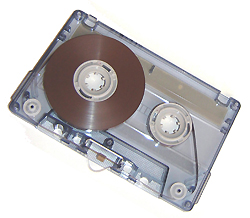
Q: I generally work entirely with DAW in my studio; however, once in a while I get the odd project that causes me to bring out all manner of old gear from storage. I was asked to do some DAT transfers for a local church I’m friendly with as a favor, which I’m always happy to do.
They’ve recorded some worship songs to DAT and want to distribute them to some local residents via (of all things) cassette tape.
What’s my problem? Well…once everything was transferred to my DAW and cleaned up, I started making a transfer to the cassette. However, the playback volume level of the cassette is lower than any store-bought cassette I have lying around.
How can I get the levels up to be comparable to commercially available recordings? All of my meters are as close to red as I can get them without going into the red and causing distortion.
A: Funny how meters don’t always really tell us what something sounds like, isn’t it?
In a word, the answer is compression. Proper use of compression will raise the average sound level and thus raise the perceived volume of sound without making peak levels much higher.
Limiting can be used to raise average volume levels without any increase in peak levels. One has to be careful though, because these processes are often accompanied by side effects that change the sound of the audio, sometimes in undesirable ways.
Engineers cope with this in a variety of ways. Basically you can compress your tracks before an initial A/D conversion, as a process during mixing, or any combination of these.
Normalization, another variation on compression, is another useful process to employ during mixing and/or mastering because it is a relatively easy way to substantially increase the perceived volume of your tracks without too many audible artifacts (depending upon how severe the normalization is).
As for your final step of going to cassette, the problem is still mostly compression. First, don’t be afraid to slam the levels on the cassette. I don’t just mean slightly going into the red. I’m saying, “slam” them. Put your pre-recorded tape in and look at the average levels of the meters, then look at the average levels of your recording. I’m not talking peak levels; I’m saying look at where the meters spend most of their time. Yours is probably lower.
You need to compress (or normalize) until you can get a higher average level without higher peak levels (they will introduce distortion), and may find that you can’t get the average level as high as the prerecorded tape without the tape distorting. This is caused by two factors:
1) Your tape machine isn’t optimized (biased) for the type of tape you are using. Corollary to this, and possible third factor is that your tape just isn’t as good as it needs to be.
2) Your recording has too much very low and/or very high frequency information in it to easily be recorded on tape at high levels. Analog tape is not linear. It doesn’t do as well at very low or high frequencies, especially if noise reduction is being used, and especially if there are big transients with those frequencies.
The solution may be as simple as rolling off some low- and high-frequency content, or you may have to go back to your source and pull some out some of the low bass. There’s no reason, for example, to try to record much of anything above about 12 kHz on a cassette. Most cassette recorders are not going to record it very well (if at all) and it eats up a ton of headroom.
If you get the proper equipment and experiment enough with these factors you will find that you’ll soon be getting 95—99 percent of the level on your tapes as the pros.
For more tech tips go to Sweetwater.com















